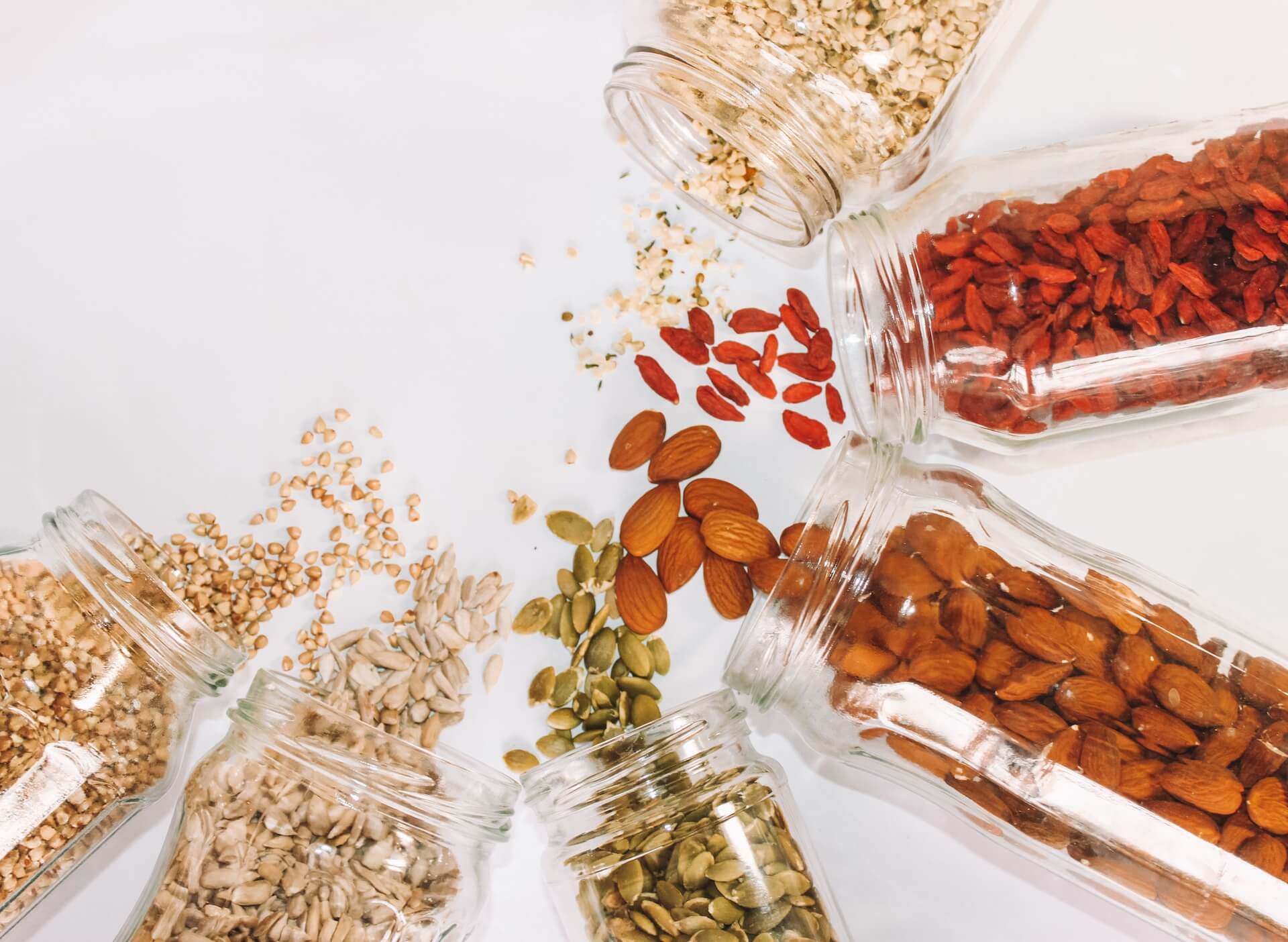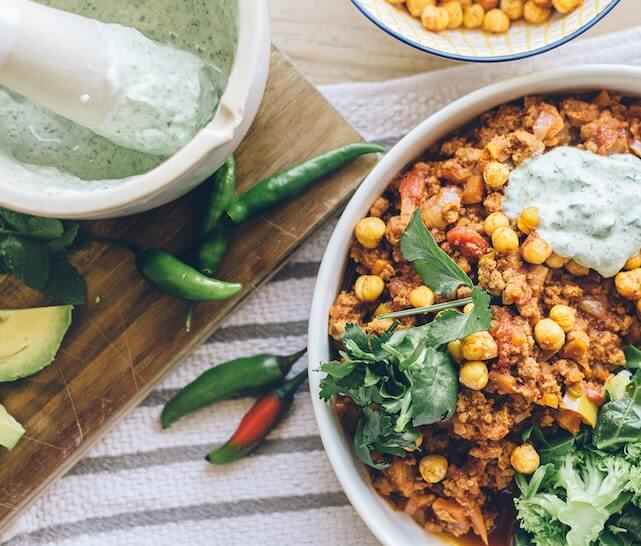You’ve probably heard somewhere that carrots are too high in sugar and should be avoided or eaten sparingly. As a registered dietitian and nutrition expert, I am here to tell you that this is false and that carrots are a worthy addition to any balanced diet, even for those who live with diabetes.
When it comes to nutrition for managing blood sugar, eating a balanced diet is key. Carrots are high in fiber, vitamins, and minerals and provide several health benefits.
In this article, we’ll dig into the glycemic index and glycemic load of carrots, the benefits of eating them for controlling blood sugar, and we’ll even give you some general tips for eating healthy with diabetes.
What are the Glycemic Index and Glycemic Load of Carrots?
While it is true that carrots contain natural sugars, they are not considered high in sugar when compared to many other fruits and vegetables.
The glycemic index (GI) and glycemic load (GL) are measurements that tell you how carbohydrate-based foods will impact blood glucose levels. Understanding the GI and GL of different foods can help people with diabetes make informed decisions about what to eat.
Carrots have a low glycemic index, typically ranging between 16 and 41. Eating raw carrots results in a slower and more gradual increase in blood sugar compared to foods with a higher GI. The sugar in carrots is accompanied by fiber, which helps slow down the absorption of sugar into the bloodstream.1
The specific GI of carrots can vary depending on ripeness and how they are cooked. Cooked carrots generally have a higher GI compared to raw carrots. Boiled carrots have a higher GI than raw carrots. Steamed carrots have a slightly higher GI than raw carrots; however, they have a lower GI than boiled carrots.1,2
<p class="pro-tip"><strong>Learn more: </strong> <a href=how-glycemic-index-and-glycemic-load-impacts-glucose> What Is Glycemic Index? Glycemic Load? How Do They Impact Your Glucose</a>.</p>
Do Carrots Raise Blood Sugar?
When eaten in moderate amounts, carrots have minimal impact on blood sugar compared to high-GI foods. The fiber content in carrots slows down the digestion and absorption of carbohydrates, preventing blood sugar spikes.
People living with diabetes or those who want to keep their blood sugar stable should eat carrots in moderate portions or eat them as part of a balanced meal or snack. While carrots are generally considered suitable for those living with diabetes, eating too much at once may lead to high blood sugar.
Beta-carotene, a potent antioxidant found in carrots, may play a role in regulating glucose metabolism. Research on the relationship between beta-carotene and insulin resistance is still evolving. Still, some studies suggest that vitamin A deficiency may decrease insulin secretion and elevate blood glucose.3,4
Beta-carotene converts to vitamin A in the body, so eating more carrots might help improve insulin resistance and type 2 diabetes.
Carrots and Diabetes: Are They Good for Diabetes?
A healthy diabetes diet includes a variety of foods from all food groups, including fruits, vegetables, whole grains, lean proteins, and healthy fats.
Vegetables are full of vitamins, minerals, fiber, and phytochemicals. Many are low in calories and carbohydrates, so you can eat more without worrying about your blood sugar.
There are two main types of vegetables: starchy and non-starchy. Non-starchy vegetables are lower in calories, carbohydrates, and sugar, while starchy veggies contain more carbs and calories. Carrots are a non-starchy vegetable.
Dietitians and diabetes educators often recommend filling half your plate with non-starchy vegetables to increase feelings of fullness and make your meal more satisfying with fewer calories. The other two-quarters of the plate should consist of protein and starch or grains.
Carrots are a healthy food choice for people living with diabetes and make a great addition to a balanced diet.

5 Benefits of Eating Carrots for Diabetes
1. Carrots are a good source of carotenoids
Carotenoids are the plant compounds found in carrots that give them their vibrant orange color. One of these carotenoids is beta-carotene, which the body uses to make vitamin A. Carotenoids have antioxidant properties, protecting cells from damage caused by free radicals.
2. Carrots are a good source of vitamin A
Vitamin A is essential for maintaining healthy vision, supporting immune function, and promoting skin health. People living with diabetes may have a higher risk of certain eye conditions (like diabetic retinopathy), making vitamin A in carrots particularly beneficial. Recent research suggests that vitamin A may play an important role in glucose and lipid metabolism.5
3. Carrots are high in fiber
Fiber is a crucial nutrient for individuals living with diabetes. Carrots contain soluble and insoluble fiber, which can aid digestion, promote bowel regularity, and help manage blood sugar levels. Fiber also contributes to a feeling of fullness, supporting a healthy weight.
4. Carrots are rich in vitamin B6
Vitamin B6 is involved in many reactions in the body. It plays a role in carbohydrate metabolism, protein synthesis, and nervous system functioning. Maintaining adequate levels of vitamin B6 is important for overall health and well-being, especially for individuals living with diabetes.6
5. Carrots are a great source of antioxidants
Antioxidants help protect the body against oxidative stress and damage caused by free radicals. Carrots contain various antioxidants, such as beta-carotene, vitamin C, lutein, and zeaxanthin. These antioxidants can help reduce inflammation, support heart health, and potentially lower the risk of chronic diseases associated with diabetes.7
Raw vs. Cooked Carrots: What is Better for Diabetes?
When it comes to whether raw or cooked carrots are better for diabetes, it comes down to personal preference. Here’s a breakdown of the benefits of each:
Raw Carrots
Raw carrots are popular due to their crisp texture and natural sweetness. When eaten raw, carrots retain their maximum nutrient content, including vitamins, minerals, and antioxidants. They are also rich in dietary fiber, which aids in digestion, helps regulate blood sugar levels, and promotes satiety.
Raw carrots have a low glycemic index, which means they have minimal impact on blood sugar levels. This makes them a suitable choice for individuals with diabetes, as they are less likely to cause significant fluctuations in blood sugar.
Cooked Carrots
Cooking carrots can offer certain advantages as well. Heating carrots soften their texture and can enhance their natural sweetness. Steaming or microwaving carrots helps retain their nutritional value while making them more tender and palatable to some people.
Interestingly, cooking carrots can also make some nutrients more bioavailable, such as beta-carotene. Heating carrots can break down the cell walls, making beta-carotene more accessible to the body.
The cooking method can affect the glycemic index of carrots. Boiling carrots may result in a higher glycemic index compared to other cooking methods due to increased water content. Steaming or microwaving carrots generally helps maintain their texture and fiber content, resulting in a lower glycemic index.
Ultimately, the choice between raw and cooked carrots for individuals with diabetes depends on personal preference. Some may prefer the crunch and freshness of raw carrots, while others may find cooked carrots more enjoyable.
If you’re eating cooked carrots, you may want to enjoy them in smaller amounts as part of a balanced meal with protein and healthy fats.
{{mid-cta}}
How Many Carrots Can a Diabetic Eat a Day?
The suggested serving size of carrots for individuals living with diabetes can vary based on the preparation method and individual dietary needs. Here are some general recommendations to consider:
The recommended serving size of raw carrots is typically around ½ cup or 50 grams. This portion is equivalent to roughly one medium carrot or several baby carrots. Remember that this guideline can be adjusted based on individual preferences and dietary requirements.
When carrots are cooked, their volume reduces due to water loss. Therefore, the serving size of cooked carrots may appear larger than that of raw carrots to maintain a similar nutritional content. A suitable portion of cooked carrots is generally around ¾ cup or approximately 75 grams. Again, these serving sizes can be adjusted based on personal preferences and dietary needs.
Carrots are considered a healthy choice for diabetes due to their high fiber content and beneficial nutrients. Including them regularly in the diet, in appropriate portions, can contribute to a well-rounded and balanced meal plan.
What Other Vegetables Are Good For Diabetics?
There are no “good” and “bad” vegetables when it comes to eating for diabetes. Eating more vegetables can be beneficial for diabetes. However, non-starchy vegetables can be eaten in larger quantities than starchy vegetables without spiking blood sugar because they have a lower glycemic index.
Here is a list of non-starchy vegetables to include in a diabetes diet:
- Artichoke
- Asparagus
- Avocado
- Broccoli
- Cabbage
- Cauliflower
- Celery
- Cucumber
- Eggplant
Healthy Eating Habits for Diabetes
People living with diabetes are often told that they can’t have any sugar and that they strongly limit their carbohydrate intake. But this restrictive diet advice is outdated and untrue.
Most people think of sweets and baked goods when they hear the word sugar, but fruits, vegetables, and whole grains also have sugar. The American Diabetes Association (ADA) recommends limiting the intake of added sugar and highly processed carbohydrates but highly encourages eating fruits and vegetables as part of a healthy diet.
An extremely low-carb diet like keto is not necessary for blood sugar control, either. Carbohydrates are the body’s main energy source, so eliminating them completely is problematic and not recommended. Instead, you should include carbohydrates in a balanced diet and pay attention to what you eat carbs with.
Here are some tips for healthy eating with diabetes:
1. Opt for high-fiber carbohydrates
You know by now that fiber helps increase feelings of fullness and slows digestion, delaying the release of glucose into the bloodstream. This delayed release of glucose prevents large fluctuations in blood sugar. Fiber also promotes a healthy digestive system and supports healthy cholesterol levels.8
2. Eat healthy fats
Dietary fat is important for several reasons. Dietary fat supports brain and heart health. Eating more monounsaturated and polyunsaturated fats instead of trans and saturated fats can help improve heart health. Healthy fats can help reduce LDL cholesterol levels, decrease inflammation, and lower the risk of heart disease.
Eating healthy fats also supports hormone balance, which is important for reproductive health, metabolism, and overall well-being. It also allows the body to absorb fat-soluble vitamins A, D, E, & K.
Omega-3 fatty acids are beneficial for brain health and lowering blood pressure. Healthy fat sources include fatty fish, olive oil, nuts (walnuts, almonds), and seeds (flax, chia).

3. Cut down on red and processed meats
Red meat and processed meats are high in saturated fat. Excess saturated fat intake is associated with an increased risk of cardiovascular disease and other metabolic disorders.
Lean protein is the best option for a balanced diet. Roughly a quarter of your plate should be a lean protein source, such as chicken, fish, beans, or legumes. Avoid deep frying and charring your protein; try baking or lightly grilling instead.
4. Combine protein and fat with carbohydrates
Adding protein and fat to carbs slows digestion and increases satiety. This keeps blood sugar levels stable and keeps you feeling full for longer. Instead of eating just crackers, add some cheese and tuna. Instead of just fruit, add some low-fat Greek yogurt.
When in Doubt, Visit a Specialist
Sometimes people living with diabetes may need to visit a specialist, such as an endocrinologist, registered dietitian nutritionist, or certified diabetes educator.
If you are newly diagnosed or have poor blood glucose control, it’s important to meet with a healthcare professional specializing in diabetes management. Managing diabetes requires a comprehensive understanding of the condition, treatment options, blood glucose monitoring, medication management, and lifestyle modifications.
If you’re considering changing any part of your diet or lifestyle, it’s important to have the help and support of a specialist. They can provide personalized guidance on carbohydrate counting, meal planning, weight loss, physical activity, and other lifestyle modifications to ensure the changes are safe, effective, and sustainable.
Learn More About Healthy Nutrition with Signos’ Expert Advice
Signos is a great resource for expert advice on healthy eating for diabetes and blood sugar management. Signos has a team of registered dietitians who bring evidence-based nutrition information to help you improve your health and wellness. Check out the resources here.
Signos CGM empowers you to improve your health by keeping track of your diet, exercise, sleep habits, and blood sugar. Knowledge is power, and a CGM can give you specific information about how your habits affect your health.
Find out if Signos is a good fit for you by taking a quick quiz.
Discover how to live well with diabetes with the help of Signos wearable CGM.
- Item 1
- Item 2
- item 3
Topics discussed in this article:
References
- Atkinson, F. S., Foster-Powell, K., & Brand-Miller, J. C. (2008). International tables of glycemic index and glycemic load values: 2008. Diabetes care, 31(12), 2281–2283. https://doi.org/10.2337/dc08-1239
- Sharma, K. D., Karki, S., Thakur, N. S., & Attri, S. (2012). Chemical composition, functional properties and processing of carrot-a review. Journal of food science and technology, 49(1), 22–32. https://doi.org/10.1007/s13197-011-0310-7
- Trasino, S. E., Benoit, Y. D., & Gudas, L. J. (2015). Vitamin A deficiency causes hyperglycemia and loss of pancreatic β-cell mass. The Journal of biological chemistry, 290(3), 1456–1473. https://doi.org/10.1074/jbc.M114.616763
- Marcelino, G., Machate, D. J., Freitas, K. C., Hiane, P. A., Maldonade, I. R., Pott, A., Asato, M. A., Candido, C. J., & Guimarães, R. C. A. (2020). β-Carotene: Preventive Role for Type 2 Diabetes Mellitus and Obesity: A Review. Molecules (Basel, Switzerland), 25(24), 5803. https://doi.org/10.3390/molecules25245803
- Zhang, Y., Wang, T., Hu, X., & Chen, G. (2021). Vitamin A and Diabetes. Journal of medicinal food, 24(8), 775–785. https://doi.org/10.1089/jmf.2020.0147
- Nix, W. A., Zirwes, R., Bangert, V., Kaiser, R. P., Schilling, M., Hostalek, U., & Obeid, R. (2015). Vitamin B status in patients with type 2 diabetes mellitus with and without incipient nephropathy. Diabetes research and clinical practice, 107(1), 157–165. https://doi.org/10.1016/j.diabres.2014.09.058
- Bajaj, S., & Khan, A. (2012). Antioxidants and diabetes. Indian journal of endocrinology and metabolism, 16(Suppl 2), S267–S271. https://doi.org/10.4103/2230-8210.104057
- Anderson, J. W., Baird, P., Davis, R. H., Jr, Ferreri, S., Knudtson, M., Koraym, A., Waters, V., & Williams, C. L. (2009). Health benefits of dietary fiber. Nutrition reviews, 67(4), 188–205. https://doi.org/10.1111/j.1753-4887.2009.00189.x
































